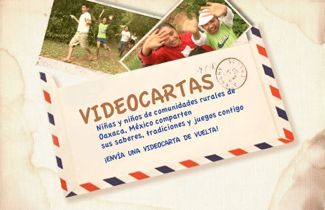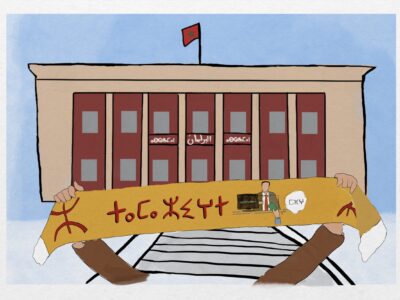Video has a way of shortening distances and transporting images from faraway places closer to local communities. That was one of the ideas behind the Videocartas (Video Letters) project – to help local communities separated by geographic distance speak directly to one another through video.
 Based on an idea that started in 1993, when a team of Cuban television producers began to work with peasant children in the Sierra Maestra mountain range in Cuba, and they found that the children there knew very little about the lives of other children in surrounding areas. They invited the children to take an active role in the production of a video, where they would take center stage sharing their traditions, culture, and what life is like in their community. The idea soon caught on and the children began to send similar Video Letters to communities in Brazil and Bolivia.
Based on an idea that started in 1993, when a team of Cuban television producers began to work with peasant children in the Sierra Maestra mountain range in Cuba, and they found that the children there knew very little about the lives of other children in surrounding areas. They invited the children to take an active role in the production of a video, where they would take center stage sharing their traditions, culture, and what life is like in their community. The idea soon caught on and the children began to send similar Video Letters to communities in Brazil and Bolivia.
Other organizations and groups saw the fruits of this type of video exchange and sought ways to involve the children from their region. In Oaxaca, Mexico, Guillermo Monteforte of the organization Ojo de Agua began working with indigenous communities throughout the region to produce new Video Letters. Ojo de Agua is a grassroots collective of communicators committed to promoting indigenous communication through local media development and other training activities. His work produced a series of Video Letters from various indigenous communities in the state of Oaxaca with the hopes that children from all around the world can get a glimpse of their world from their point of view.
Children from the Naxo Café School and the Plan de Carril neighborhood in the town of Huautla de Jiménez share images of their houses, land, as well as how they make tortillas:
In this Triqui indigenous community, the children sing a song in their native language, and they also share their knowledge of the flora of the surrounding forest:
In this video, the children of the Lindavista de Jesús neighborhood in the Magdalena Jatlepec municipality demonstrate how they make Agave jelly and about the healing powers of local plants:
Some of the children that participated in the video from Candelaria Loxicha are deaf, and in the video one can see how the children who can hear have learned sign language to help the other children communicate in solidarity.
Finally, the Mixtec community of Yodo ‘Ndaka, which means the Plains of the Wasps, located in the Municipality of Tilantongo demonstrate some of the games that they play, as well as some of the artisan crafts made by the community.
The letters have been uploaded to the web with an open invitation that any global community can respond with its own video.



